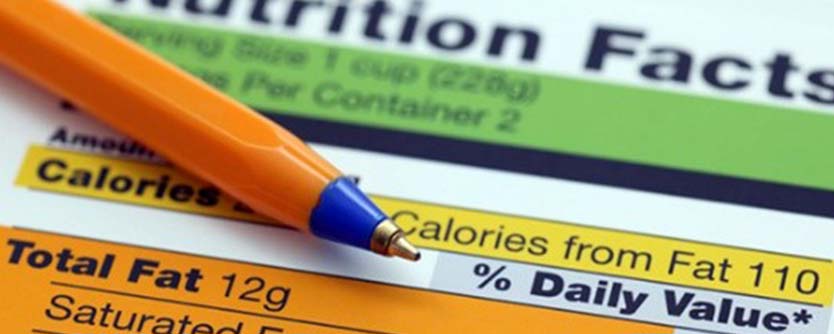Ever wondered what you must look out for on the food labels, while buying food? A quick guide on learning how to read food
[the_ad id=”6157″]
labels –
- Start with the Serving Size – Look here for both the serving size (the amount people typically eat at one time) and the number of servings in the package. Compare your portion size (the amount you actually eat) to the serving size listed on the panel. If the serving size is one cup and you eat two cups, you are getting twice the calories, fat and other nutrients listed on the label.
- Check Out the Total Calories – Calories provide a measure of how much energy you get from a serving of this food. Find out how many calories are in a single serving. It’s smart to cut back on calories if you are watching your weight. Eating too many calories per day is linked to overweight and obesity.
- Let the Percent Daily Values Be Your Guide – Use percent Daily Values (DV) to help evaluate how a particular food fits into your daily meal plan. Percent DV are for the entire day, not just one meal or snack. The High and Low of Daily Values – a) Low is 5 percent or less. Aim low in saturated fat, Trans fat, cholesterol and sodium. B) High is 20 percent or more. Aim high in vitamins, minerals and fiber.
- Limit Saturated Fat, Added Sugars and Sodium – Eating less saturated fat, added sugars and sodium may help reduce your risk for chronic disease.
- Saturated fat and Trans fat are linked to an increased risk of heart disease.
- Eating too much added sugar makes it difficult to meet nutrient needs within your calorie requirement.
- High levels of sodium can add up to high blood pressure.
Remember to aim for low percentage DV of these nutrients.
- Get Enough Vitamins, Minerals and Fiber – Eat more fiber, potassium, vitamin D, calcium and iron to maintain good health and help reduce your risk of certain health problems such as osteoporosis and anemia. Choose more fruits and vegetables to get more of these nutrients. Remember to aim high for percentage DV of these nutrients.
- Additional Nutrients – You know about calories, but it is important to also know the additional nutrients on the Nutrition Facts Panel.
Protein : A percentage Daily Value for protein is not required on the label. Eat moderate portions of lean meat, poultry, fish, eggs, low-fat milk, yogurt and cheese, plus beans and peas, seeds and soy products.
Carbohydrates : There are three types of carbohydrates: sugars, starches and fiber. Eat whole-grain breads, cereals, rice plus fruits and vegetables.
Sugars : Simple carbohydrates, or sugars, occur naturally in foods such as fruit juice (fructose) or come from refined sources such as table sugar (sucrose) or corn syrup. Added sugars will be included on the Nutrition Facts label in 2018. The 2015-2020 Dietary Guidelines for Americans recommends consuming no more than 10 percent of daily calories from added sugars.
- Check the Ingredient List – Foods with more than one ingredient must have an ingredient list on the label. Ingredients are listed in descending order by weight. Those in the largest amounts are listed first. This information is particularly helpful to individuals with food sensitivities and for people who prefer vegetarian eating.
Misleading Food Labels
The FDA currently allows foods containing upto 0.5 g of trans fats per serving to claim ZERO grams of trans fat per serving. Everywhere else in the world, 0.5 g does not equal zero. In basic math, 0.5 is rounded upto 1.
Products labeled as sugar free often use strange sugar replacements or boost the fat to create flavor. Most of them use maple syrup or rice malt syrup, still sugar containing the same number of calories as normal table sugar.
Real fruit is not the same as whole fruit. This could refer the fruit extract or juice, both of which contain fewer nutrients and more sugar.

